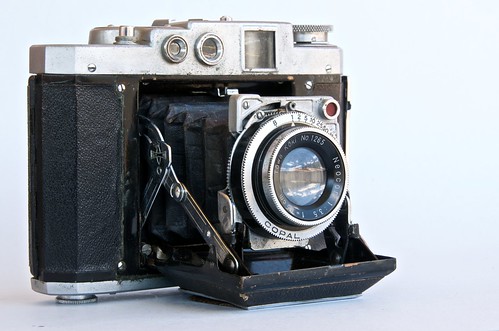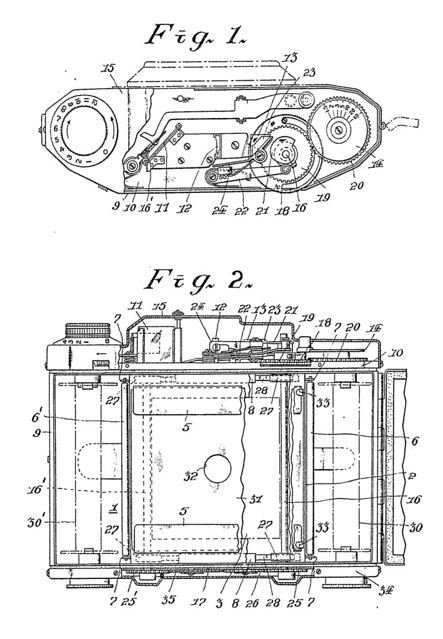Mamiya Six
This article is about the camera made in the 1940s and '50s. For the 1990s camera, see Mamiya 6.
The Mamiya Six is a series of 6×6 folders with a coupled rangefinder made by Mamiya from 1940 to the 1950s. All of them are focused by moving the film plane. Some have Zuiko lenses.
Contents
Evolution
The Mamiya Six I, II, and III were wartime and immediate postwar models and had both eye-level and waist-level finders. The coupled rangefinder was combined with the eye-level finder. As a result, there were three windows at the front of the top housing. The Mamiya Six III added an exposure counter with double exposure prevention.
Model I came in two versions: one for size "O" shutters with three struts and (eyelets for a strap) and a model la for the larger shutter "OO", with two struts. Both used a K.O.L. Special 7.5cm/3.5 lens and are prewar in design, well built, with focusing at the film plane. Shutters were the buyer's choice, and the NKS Torio with T, B, 1-200, is common.
Model II came in the war years in two versions, as above. This time the strap eyelets are no longer on the camera. Serial numbers are in the 6,xxx range, the depth of field scale goes up to F:8, and the front standard has a simple unscrewing knob. Camera shutters again were the buyer's choice, and these cameras are often found with a Patent Mars, T, B, 1-250.
Model III also came in the war years, but it differs in that it has a complex flash delay on the front standard of the lens, and serial numbers are often in the 22,xxx range. Lenses and shutters are found as in models I, and II. The special version for "OO" shutters was discontinued. Late war years cameras suffer from thin chrome.
All Mamiya Six models I, Ia, II, IIa, and III have three windows in front and three screws in the accessory shoe. In early versions the depth of field scale goes to F:8 only. The top reflex viewer on model I measures 12x12mm, whereas that for the later models II and III are 11x11mm. Model III has an F:22 D.O.F scale. The exposure counting scale also comes in many shape changes. It is best to refer to Dirk H. R. Spennemann's "Mamyia Six Design Variations" web page because there were many changes too numerous to list here. It is stated that the K.O.L. Sola Special lens 7.5cm F:3.5 was an early four-element design, and all lenses on models l, la, ll, lla, and lll are uncoated. Coated lenses may be seen on later cameras.
With the Mamiya Six IV, introduced in 1947, the waist-level finder disappeared. That remained the sole model until 1953, when the Mamiya Six V added the dual 6×6 and 4.5×6 format capability, with an exposure counter functioning with both formats. The Mamiya Six K was a simpler model, with film advance by use of red windows.
In 1955 the Mamiya Six IVB introduced a squarer body design, easily recognized by the square rangefinder window. Its features were similar to those of the model IV. The Mamiya Six K2 was similar to the model K with the new body. The body design was slightly modified again for the Mamiya Six IVS and simpler Mamiya Six P.
From 1955 the Mamiya Six Automat and the later Automat 2 added a coupling between the shutter cocking and the film advance.
Pictures
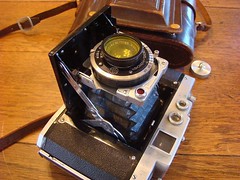 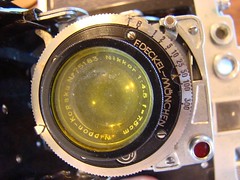 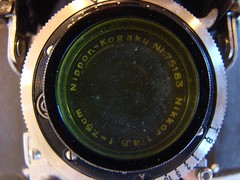
|
 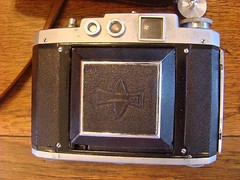 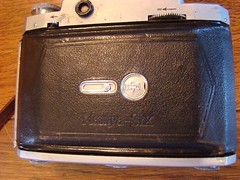
|
| Mamiya Six III no.23875, Compur shutter (T, B, 1–300), Nikkor 7.5cm f/4.5 lens no.75183. Pictures courtesy of eBayer badman664. (Image rights) |
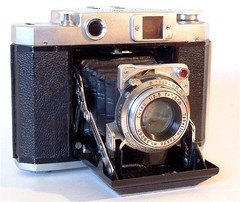  
|
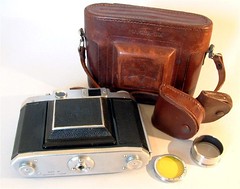 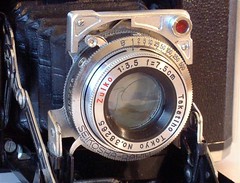 
|
| Mamiya Six IV no.35446, Zuiko 7.5cm f/3.5 lens no.38265. Pictures courtesy of Adrian Gotts. (Image rights) |
Further reading
In Japanese:
- Kitano Kunio (北野邦雄). Mamiya Shikkusu no sho (マミヤシックスの書, The book of the Mamiya Six). Tokyo: Kōgasō, 1942.
- Ōba Eiichi (大場栄一). Mamiya Shikkusu no tsukaikata (マミヤシックスの使い方, How to use the Mamiya Six). Tokyo: Kōgasō, 1956.
Links

|
| Figures from the Patent. (Image rights) |
General links
In English:
- British Patent 542016, Improvements in and relating to focusing devices for portable photographic cameras, filed June 1940 and granted December 1941 to Seiichi Mamiya, describing the camera. The Japanese Patent had effect from July 1939. At Espacenet, the patent search facility of the European Patent Office.
- Mamiya history page at Ron Herron's Mamiya 35mm site (archived)
- Mamiya Six III, formerly at Robert Monaghan's Medium Format Photography website (archive copy dated 8 May 2006, at the Internet Archive); brief notes on the camera, and archived bulletin-board discussion.
- Mamiya Six IV in English and in Japanese at Cosmonet Classic Camera (archived)
- Mamiya Six IV at Cameras Downunder
- Mamiya Six Automat II at Silverbased (archived)
- Mamiya six PDF manuals of Mamiya Six Folding, Mamiya Six K-II, Mamiya 6 Automatic, Mamiya 6 model IVB each separate at www.OrphanCameras.com
- Mamiya Six family model list at cameracollector.net
In Swedish:
- Mamiya Six, lot no.120 of auction no.31 (2 November 2008) by LP Foto
In Japanese:
- Mamiya Six I in Ranzōsha's camera pages
- Mamiya Six I and more pictures in Miyazawa Noriyuki's camera site
- Mamiya Six K2 at Japan Family Camera
- Mamiya Six IV at Aya's camera site
- Mamiya Six IV at doraDD's clacamera blog
- Mamiya Six K at Minosan's blog
- Mamiya Six K at Tak's Page
- Mamiya Six KII at Awane-Photo's camera museum
- A page about folders with a Mamiya Six Automat (archived), at Nekosan's website (archived)
- Mamiya Six at kosaka's site
- Mamiya Six Automat at Hayata Camera Laboratory
- Mamiya Six (non original grey finish) in SCR's camera website
- Mamiya Six at Shashin wo tanoshimu
Instructions
In English:
- Mamiya Six IVB on this and the following pages at Guide to Classic Cameras
- Mamiya 6 folding PDF manuals (Original Mamiya 6 with round finder, Mamiya 6 K-II, Mamiya 6 Automatic, Mamiya 6 Mode IVB at OrphanCameras.com
Original documentation
In Japanese:
- Advertisement for the Mamiya Six I and III dated 1942 or later, reproduced in Nostalgic Camera, a page of old Japanese advertisements by Toshio Inamura
Repair notes
In French:
In Japanese:
